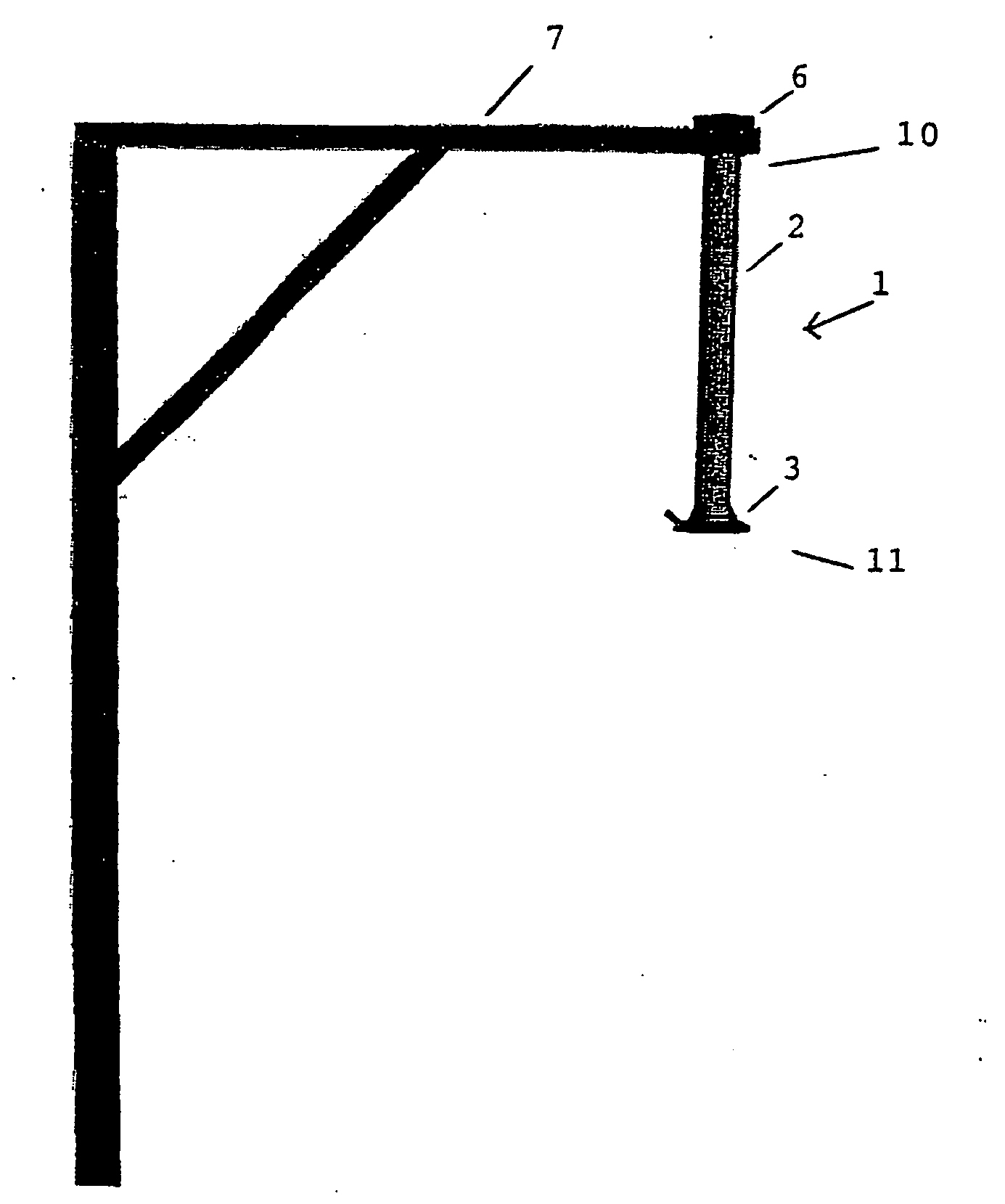Guiding member for surgical instruments, surgical instruments, coupling and uses thereof
a technology for surgical instruments and guiding members, applied in the field of surgical instruments, can solve the problems of variable failure rate, lack of rigid support, and drawbacks of catheters, and achieve the effect of avoiding the risk of blood leakage inside the organism and minimising the trauma for the patien
- Summary
- Abstract
- Description
- Claims
- Application Information
AI Technical Summary
Benefits of technology
Problems solved by technology
Method used
Image
Examples
Embodiment Construction
[0112] As illustrated in FIGS. 1 and 2, the guiding member 1 according to the present invention comprises an elongated rigid body 2, preferably tubular, having an inner lumen 20. Said body 2 presents a proximal end 21 with a first open tip 22 and a distal end 23 with a second open tip 24.
[0113] The guiding member 1 according to the invention also comprises sealing means corresponding to a sucker 3 having a first end or top 30 with a first open tip 31 and a second end or base 32 with a second open tip 33. The sucker 3 is preferably of conical shape, with its base 32 being larger than its top 30.
[0114] In the guiding member 1, the sucker 3 is mounted on the body 2, with its top 30 connected to the distal end 23 of the body 2 and in such a manner that communication inside the guiding member is allowed from the first open tip 22 of the body 2 to the second open tip 33 of the sucker 3.
[0115] The configuration, in particular the dimensions, of the ensemble body 2 / sucker 3 is such that ...
PUM
 Login to View More
Login to View More Abstract
Description
Claims
Application Information
 Login to View More
Login to View More - R&D
- Intellectual Property
- Life Sciences
- Materials
- Tech Scout
- Unparalleled Data Quality
- Higher Quality Content
- 60% Fewer Hallucinations
Browse by: Latest US Patents, China's latest patents, Technical Efficacy Thesaurus, Application Domain, Technology Topic, Popular Technical Reports.
© 2025 PatSnap. All rights reserved.Legal|Privacy policy|Modern Slavery Act Transparency Statement|Sitemap|About US| Contact US: help@patsnap.com



